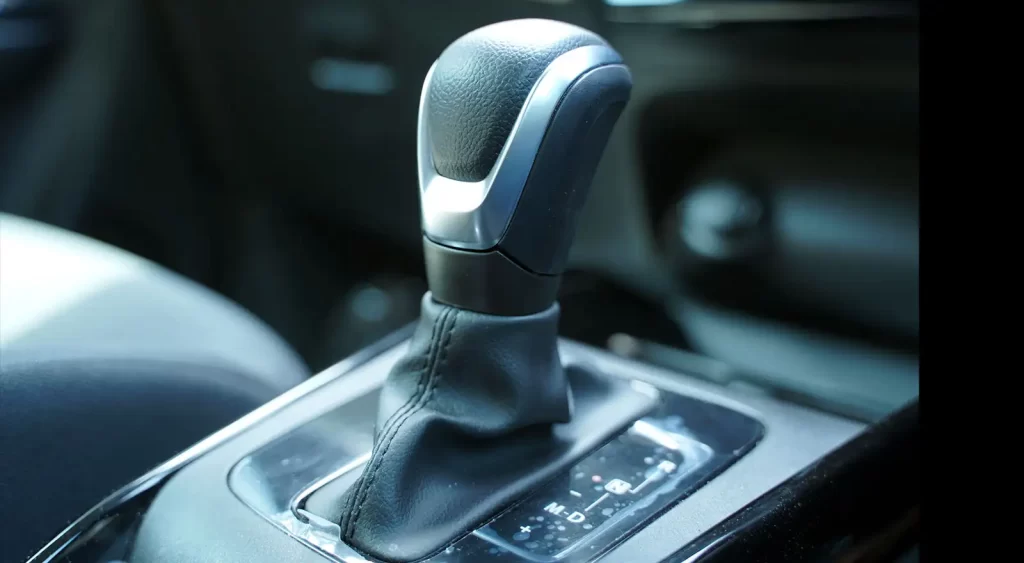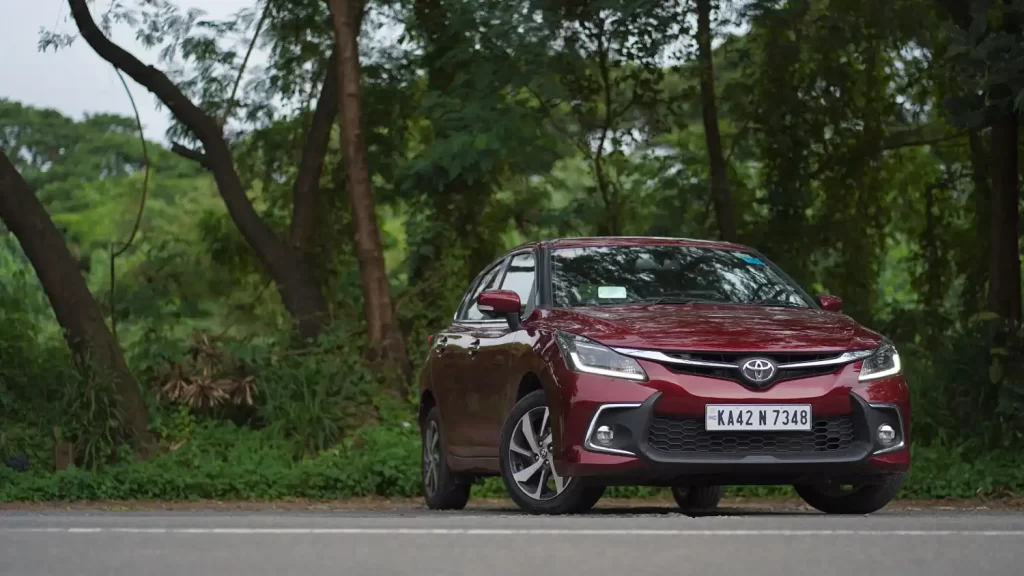Living with the AMT on the new Glanza…
Words: Neeraj Padmakumar Photos: Amal Ramdas
Toyota had launched the facelifted Glanza with the same mechanicals as the new Maruti Baleno. This essentially means that 2022 Glanza comes with an AMT automatic transmission alongside the familiar 5MT. We had detailed the changes, features, and everything you’d want to know about the new Glanza in our first look story. Furthermore, we had also given you our detailed drive impressions of the 2022 Toyota Glanza manual. Now, we have the automatic for a detailed road test.
Almost everything about the design, cabin, fit, and build qualities remain the same on both manual and automatic models. What’s really changed are the drive experience and overall practicality. This article would talk specifically about these…

A CVT No More!
The previous Glanza had a CVT as its automatic transmission. When pitted against the facelift’s AMT unit, the CVT would still have its own set of upper hands. Afterall, CVT is still a rather conventional automatic and the AMT is but an AMT!
However, the gearbox swap has a lot of advantages and makes much sense in multiple areas of everyday usability. The new transmission feels fresher and more up-to-date. With the AMT in place, the price has gone down too.
Drive Impressions
Instead of the previous car’s K12B and K12C units, 2022 Toyota Glanza is powered by the K12N petrol engine that gets Dualjet technology. The 1.2L engine differs distinctly from its predecessors, in character. On offer are 90 hp and 113 Nm, but the way these are delivered is quite different.
The engine feels slightly dull than its predecessor. However, it gets the job done when you want it to. The lower end feels toned down, but there is a decent tug of torque from around 1800 to 3200 rpm. The delivery soon dies off, before a second wave comes in after 4,500 spins.

The nature of this engine demands you to work frequently with the gearbox. This is where the AMT comes to the rescue. The shifts are smooth and timely. This automatic transmission is programmed to bring about the most efficient shifts possible. It stays or tends to stay in the highest possible gear at most times. While this definitely improves the overall fuel efficiency, we found the AMT to struggle and desperately hunt for the right gear in heavy traffic conditions.
While attempting a quick overtake, you would end up dropping a gear or two, after a slight initial hesitation from the box.
Hill Hold Can Be Intrusive!
The new Glanza is packed with safety tech and features. Worth special mention is the hill-start assist. This prevents a roll-back when you are to start after a pause, on the inclines. However, this can be intrusive at times.

Ride Quality
As we had told you in our review of the manual, the new Glanza excels in its ride quality. The suspension offers a plush ride overall, without compromising much on handling. While the handling remains identical on the automatic, we personally feel that the AMT scores slightly higher on comfort and convenience. It saves you from having to work on the gearbox, and with no head-nod offered during shifts, gives a rather relaxed ride.
Fuel Efficiency
Fuel efficiency remains one of the most important catches on the new Glanza AMT. Replacing the age-old CVT with the more-affordable AMT means that the claimed fuel efficiency is now 22+ kpl. The CVT used to offer around 13-15 kpl.

We drove our test car for 1000 odd kilometres over 5 days, through varying road and traffic conditions and with mixed driver behaviours. On a full tank of fuel, with the above variables in place, we clocked 564 km. The vehicle has a tank capacity of 37 litres. Thus, our tank-to-tank fuel efficiency would be 15.24 kpl. The test included some serious city runs with occasional instances of dense traffic, relaxed highway cruising, and runs through unpaved roads. We also did some spirited driving during the span. Thus, these could simply be the most real-world figures you’d get today!
Diving deeper into the highs and lows, 20.7 kpl is the maximum mileage (indicated and to be believed!) we could clock on highways, with efficient driver behaviour. 14.7 kpl is the least we scored in tight traffic/city runs. 17 kpl averaged the in-city figures, with extremely efficient driver behaviour.

Even while some of you might feel it to be a bit intrusive or inconvenient, we strongly recommend having the idle start/stop on at all times. This ISG-based system does wonders in saving fuel. The downside, however, is that it does not get the AC running while idling, even if the temperature falls below the set figures.


